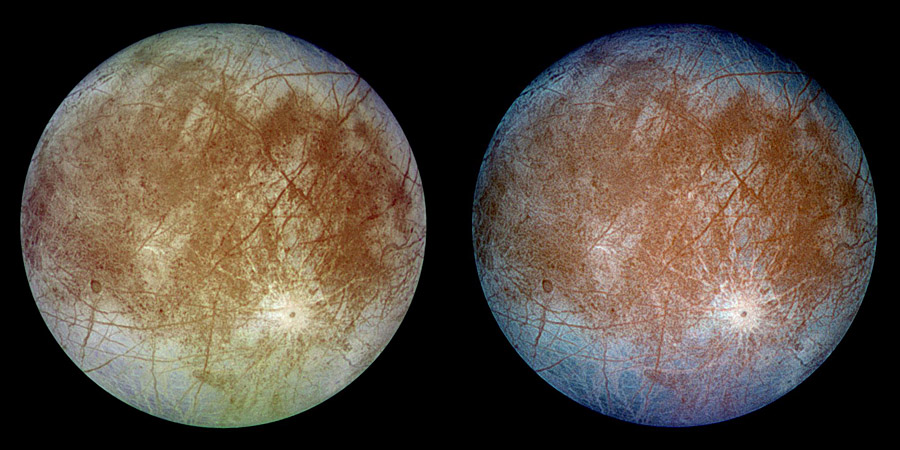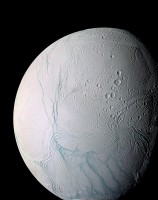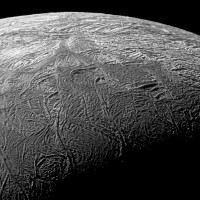Two views from NASA’s Galileo mission of Jupiter’s moon Europa. The left image shows the approximate natural color appearance of Europa. The right image is a false-color composite of violet, green and infrared images to enhance color differences in the predominantly water-ice crust of Europa. (NASA/JPL/DLR)
Home Two views from NASA’s Galileo mission of Jupiter’s moon Europa. The left image shows the approximate natural color appearance of Europa. The right image is a false-color composite of violet, green and infrared images to enhance color differences in the predominantly water-ice crust of Europa. (NASA/JPL/DLR) Two views from NASA's Galileo mission of Jupiter's moon Europa. The left image shows the approximate natural color appearance of Europa. The right image is a false-color composite of violet, green and infrared images to enhance color differences in the predominantly water-ice crust of Europa. (NASA/JPL/DLR)
Two views from NASA’s Galileo mission of Jupiter’s moon Europa. The left image shows the approximate natural color appearance of Europa. The right image is a false-color composite of violet, green and infrared images to enhance color differences in the predominantly water-ice crust of Europa. (NASA/JPL/DLR)




